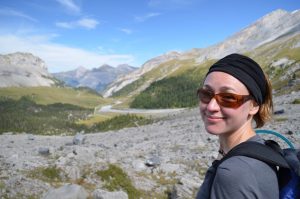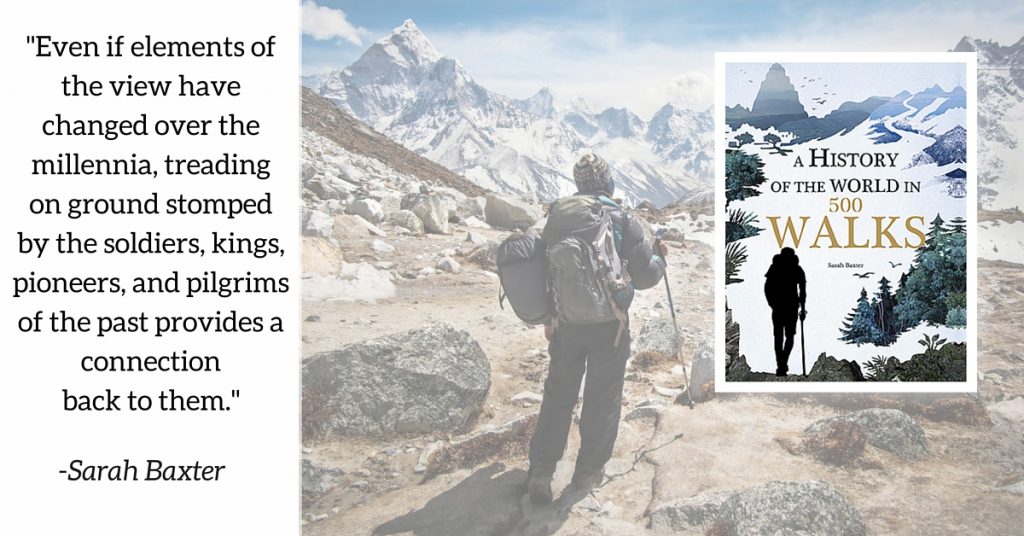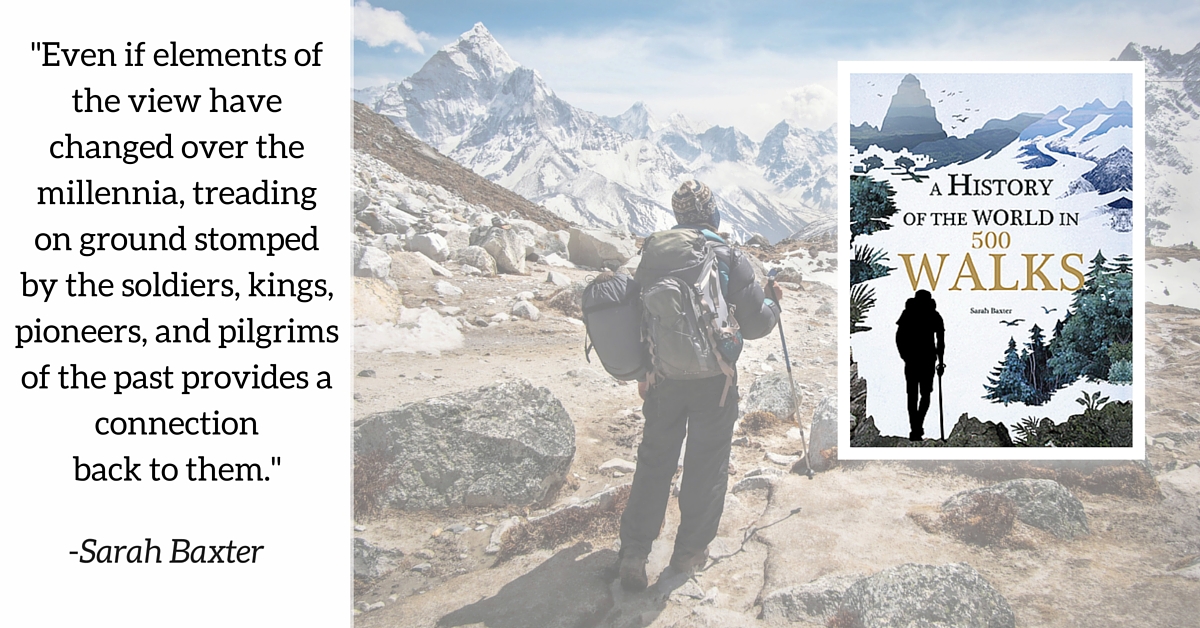Summer is around the corner, and with it comes hiking weather! To get inspired, we talked to Sarah Baxter, author of, A History of the World in 500 Walks. From geologic upheavals and mad kings to trade routes and saints’ ways, this book allows you to take a grand tour of world events at eye-level perspective!
What inspired this book?
In the UK, we have magnificent Ordnance Survey maps, which cover the whole country in unbelievable detail. On these maps, you often see, in gothic script, the words ‘hill fort’ or the symbol of a pair of crossed swords, marking a battlefield. Sometimes, little is still visible at the actual site. But it gets you thinking... what exactly happened here? What stories does the landscape hold? I love taking a walk – it’s always a great way to appreciate beautiful places. But if you know a little about the area’s history too, that can make a good walk even greater.
What was the most important thing you learned during the process of writing this book?
That there is history everywhere. It might be millions of years of geology stacked up in the rocks. It might be the paving stones beneath your feet, laid by an ancient civilization. Often, it’s layered – a landscape doesn’t necessarily tell one story from one time; it’s more like a diary that has been added to over successive centuries.
Do you have a favorite walk?
England’s South West Coast Path, which wraps around the coast of Somerset, Devon, Cornwall and Dorset for 630 miles. It’s virtually on my doorstep but unrelentingly spectacular. There’s smuggling history, 19th-century tin mines, Jurassic geology, Arthurian legend – not to mention jaw-dropping cliffs and coves. The whole package.
Are there any walks you wanted to include in the book but didn’t?
I could have spent a lifetime researching this book and still not uncovered a fraction of the history-laced walks out there. I would have loved to include walks in Syria, Iraq, Afghanistan – countries where the landscape’s backstory is so unbelievably rich but the terrain now so troubled.
Do you have any advice for someone attempting to make his or her own list of walks?
Know what you’re trying to achieve. This book is broken down into chronological chapters, so it’s easy for the reader to trace the passage of history, and helped me focus on which walks to include, what story I wanted to tell.
What is the most difficult walk you have attempted and why?
Difficultly can be down to numerous factors. Climbing Kilimanjaro was tough, due to the high altitude – the summit is 5,895m (19,341 ft.). Walking parts of France’s GR10 was challenging, as it was the first time I’d walked for multiple days while carrying all my own stuff (and had significantly overpacked!). But the beauty of walking is that it doesn’t have to be difficult – you take things at your own pace.
Walking through history is an interesting concept. How does this approach enhance the reader’s understanding of the historical event/location?
Walking makes us slow down, which in turn helps us really focus on the landscape. Barreling across countries in cars or planes, you don’t have a chance to take in the small details. Walk through a landscape and you’ll notice all its little lumps and bumps, and start to wonder: why is that there? It sparks curiosity. You’re exploring a living, interactive museum.
Choosing 500 walks must have been daunting. How did you decide which walks to include?
I wanted to cover a whole range of epochs and themes; I also wanted to feature a wide geographical spread. Some regions are particularly dense in historical walks – much of Europe, for instance – but I wanted to ensure there were walks on other continents too. I also wanted to try to find walks that were set trails rather than nice regions in which to plan a hike. So, where possible, I have included defined routes.
We hear you are passionate about the outdoors. How many of these 500 walks had you completed prior to writing this book? Did writing this book affect your perspective of any of those walks and the history they contain?
I wish I had completed all 500 walks! But that would take several lifetimes, and a lottery win. I have covered all or parts of around 50 of the routes, and writing the book made me hungry to do many more. It has also made me keener to look around, wherever I am. I question the lay of the land, and the historic hands that might have made it that way, all the more now.
Were you inspired to do any new walks you haven’t done before after researching this book?
Yes, definitely. There were certain walks that really made my feet itch. Greenland’s Arctic Circle Trail, for instance – I loved the idea of the wildness and the self-sufficiency in this land at the frontline of climate change. Also, I felt drawn to many of the pilgrimages – the Via Francigena, Japan’s Shikoku 88 Temple walk. There’s something inspiring about following in centuries of faithful footsteps.
About the Author:

Mainly, though, she likes to put one foot in front of the other. Whether it be ice-axing up Italy’s Gran Paradiso, completing all 1,000km of England’s South West Coast Path, summitting Kilimanjaro, exploring Bhutan’s only yeti reserve, completing New Zealand’s Tongariro Crossing (by night) or strolling from her front door in Bath straight into the Cotswolds, she is never happier than when she's out on a walk.








